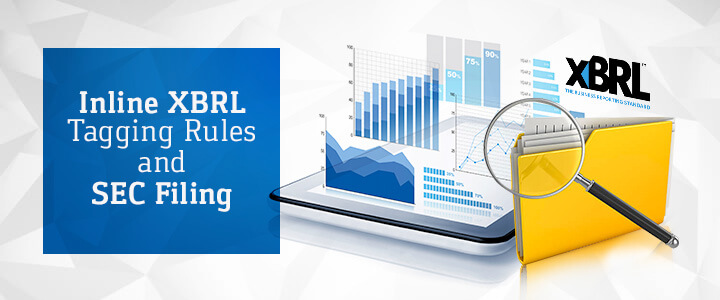Inline XBRL (iXBRL) has become the standard for filing financial reports with the U.S. Securities and Exchange Commission (SEC). This format combines the flexibility of HTML for human readability with XBRL’s machine-readable data structure. Understanding the Inline XBRL tagging rules is essential for compliance, accuracy, and efficiency in SEC filings.

Key Inline XBRL Tagging Rules for SEC Filings
The SEC requires public companies to file their financial data using Inline XBRL, adhering to specific tagging rules:
-
Correct Tagging of Financial Data
Each financial statement element must be tagged with the appropriate XBRL tag from the US GAAP Financial Reporting Taxonomy. Tags identify specific data, such as revenue, expenses, assets, liabilities, and equity. Correct tagging ensures that the data can be accurately extracted and analyzed.
-
Use of the US GAAP Taxonomy
For U.S.-based public companies, the SEC mandates using the US GAAP Financial Reporting Taxonomy. This taxonomy is updated periodically, and companies must use the latest version to remain compliant. Using the correct taxonomy ensures that financial statements are consistently structured and comparable.
-
Embedding Tags in HTML Format
iXBRL filings must include the XBRL tags embedded within the HTML content of the financial reports. The tags are invisible to readers but can be extracted by machines for data processing and analysis.
-
Consistency in Tagging Across Reporting Periods
To maintain consistency, companies must use the same tags and taxonomy elements across different reporting periods. This allows for accurate year-over-year comparisons of financial data and ensures compliance with SEC regulations.
-
Proper Use of Custom Tags
In some cases, companies may need to use custom tags for items not covered by the standard taxonomy. However, the use of custom tags should be limited to avoid confusion and ensure the data’s clarity and accuracy.
Benefits of Inline XBRL for SEC Filings
- Efficiency: iXBRL automates data extraction, making the SEC filing process faster and more accurate.
- Accessibility: iXBRL improves the accessibility of financial data for both machines and humans, making it easier for regulators, analysts, and investors to review and analyze reports.
- Compliance: Adhering to iXBRL tagging rules ensures compliance with SEC filing requirements and avoids penalties for incorrect or incomplete filings.
Best Practices for Inline XBRL Tagging
- Automated Tagging Tools: Use specialized XBRL conversion software to automate tagging, reducing manual effort and the potential for errors.
- Taxonomy Updates: Stay updated on changes to the US GAAP Taxonomy to ensure that the latest standards and rules are followed.
- Regular Validation: Before submitting your filing to the SEC, validate your XBRL tags using automated tools to identify and correct any issues.
- Seek Expert Help: For companies lacking in-house expertise, working with XBRL tagging service providers can ensure compliance and accuracy in filings.
Conclusion
Inline XBRL has streamlined the SEC filing process by making financial reports both human-readable and machine-readable. Adhering to the Inline XBRL tagging rules is crucial for ensuring accurate, compliant, and efficient filings. By following the correct tagging procedures and utilizing automated tools, companies can avoid common filing errors and ensure smooth submissions to the SEC.
If you're unsure about the XBRL tagging process, consider leveraging professional XBRL conversion services to assist with your filings, ensuring full compliance and accuracy.
